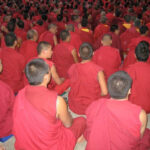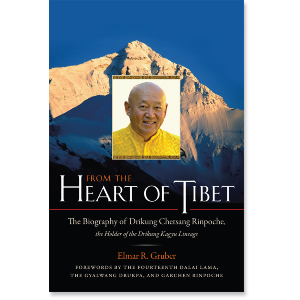| The following article is from the Winter, 2001 issue of the Snow Lion Newsletter and is for historical reference only. You can see this in context of the original newsletter here. |
A Westerner's Glance Inside the Great Monastery of Sera Jey
Part II: Photos of Daily Life
by DEVON COTTRELL HOLMES and ANDREW HOLMES
Photographs by SARA SHAPIRO
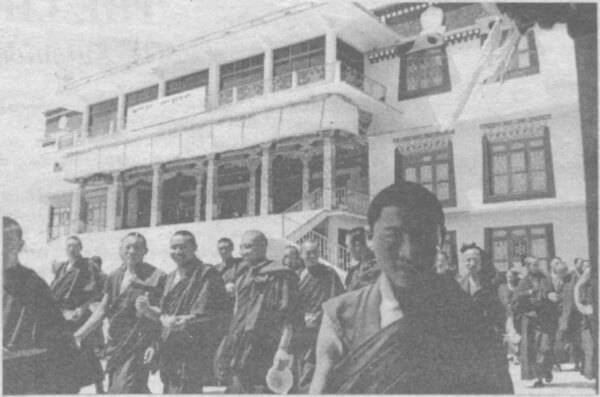
Monks leaving the Main Assembly Hall.
In 1959, His Holiness the Dalai Lama took asylum in India and was followed by 100,000 Tibetan refugees. After years in transit camps, the Tibetans who survived were transferred to refugee settlements.
In 1974, the south Indian State of Karnataka gave two hundred elderly monks from Sera Jey Monastery 200 acres of land on which to live in Bylakuppe. The elderly monks cleared the jungle land amidst snakes, tigers, and herds of wild elephants. They suffered malnourishment and the majority of them contracted tuberculosis. It took about three years to cut down the trees.
The monks then planted much of the land with fruits and vegetables, primarily corn as it could be sold to buy other food supplies. At the same time, they built a hall for living quarters.
These brave pioneers found the strength to carry on through the inspiration of H.H. the Dalai Lama. Through their incredible efforts, their goals were realized, and a new era began, preserving and protecting the unique Tibetan Buddhist traditions and culture in exile.
The greatest number of the students at Sera Jey escaped from Tibet; others are orphans. Many are from remote Northeastern border regions such as Arunachal Pradesh and Ladakh.
The refugees are still pouring into Sera Jey from Tibet. By 1985 the monk population had risen from the original 200 to 800; by 1991 it was up to 1,900 and now in the fall of 2000 Sera Jey has a total monk population of 3,200.
The Monastery cannot keep up with the influx of new monks. The monks' quarters are severely overcrowded. We saw monks in their twenties, three to a room with barely enough space for three beds.
The Monastery is not only the monks' residence, but is also their university where their traditional program of study leading to the highest geshe degree will take from 15 to 20 years.
For the monks, the time from dawn to midnight is engaged in saying prayers, memorizing scriptures, and studying voluminous philosophical treatises and commentaries.
The rural atmosphere of Bylakuppe is peaceful and quiet. Fields which were once planted in corn by the first pioneers of the new Sera Jey have been covered over with buildings to house the incoming refugees.
The highest degree conferred on a monk in a monastery is a Geshe degree. It is roughly equivalent to a Western Doctor of Divinity degree. After graduating as a Geshe, one can then attend one of the two Tantric Colleges for an additional two year study of Tantra and related ritual aspects of the Dharma.
Every year, approximately 20 to 25 monk scholars from Sera Jey graduate as Geshes after successfully completing thorough written and debate examinations taken over a period of several days.
At the end of each year there is an annual examination where monks are required to take both written and oral tests in debating skills. Marks are given and promotions are made to accordingly higher classes.
A Day of Monastic Life
In the morning the monks attend the Assembly Hall at 5:30 a.m. After the Assembly Hall, monks memorize scripture until 9:00 a.m. At 9:00 a.m. the bell rings for debating sessions until 10:30 a.m. The monks attend classes from about 1:00 p.m. until 4:30 p.m. After 6:00 p.m. students attend debate session until 10:30 p.m. After debating, the monks return to their own rooms and continue to memorize what they learned in the morning.
The Kitchen at Sera Jey
The kitchen is run by three monks who are appointed by the members of the assembly as leaders. These leaders serve for three years and are paid a very small stipend. Along with these three leaders, there are seven people, some of whom are volunteers, and some who are permanent.
As it is impossible to run the kitchen, which prepares food for 3,200 people, with only seven workers, an addition fifty monks (half senior and half younger) provide assistance on a rotational basis. They have to attend the kitchen in the morning starting at 2:00 am. If they are late an hour, they must repeat the work for an additional day!
The Problem of Hunger
The Monastery administration endeavors to provide one midday meal to each of the 3,200 monks. This is provided for by a capital fund.
The evening meal is being funded by donations, as is breakfast. With the increase in newly arrived refugees, the need for donations increases.
Please help in this effort to provide morning tea and bread to the 3,200 monks of Sera Jey Monastery.
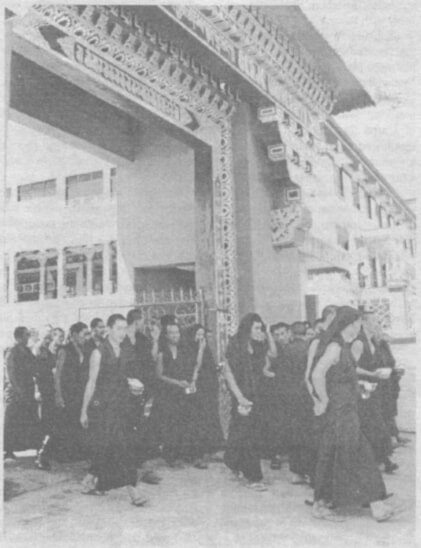
Entrance gate to the Sera Jey Main Assembly Hail.
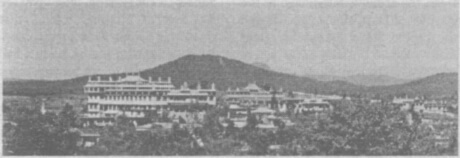
View of new Sera Jey Main Assembly Hall and the older assembly hall, Sera Lachi, to its right.
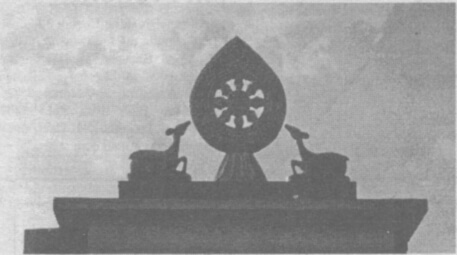
Roof of the Main Assembly Hall
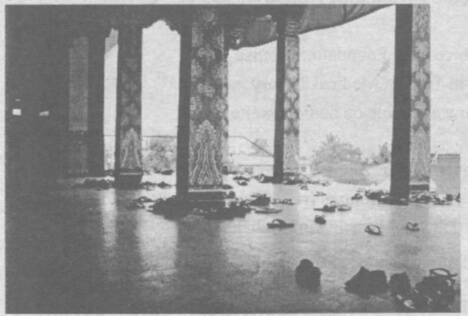
Sandals of the monks at the entrance way to the Main Assembly Hall. The side door (left side of photo) leads to the upper floors. The New Sera Jey Assembly Hall, funded by donors from abroad, was consecrated by H.H. the Dalai Lama.
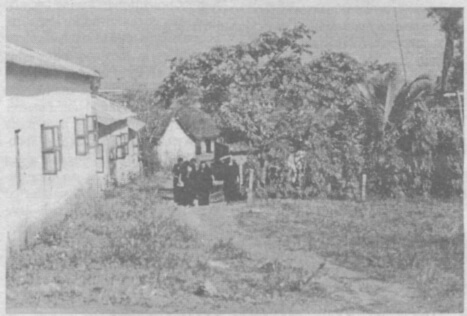
In 1974 when the refugee monks arrived, the land was a jungle inhabited by snakes, tigers and wild elephants. Fields cleared and planted with corn by the first pioneers of the new Sera Jey have been covered with buildings to house the incoming refugees.
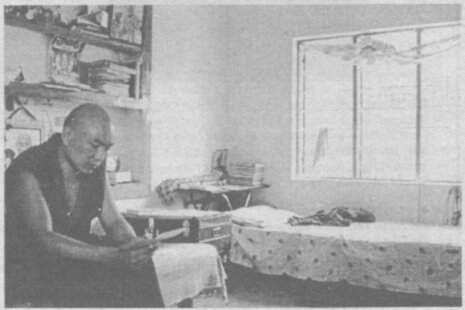
Monk studying in his room.
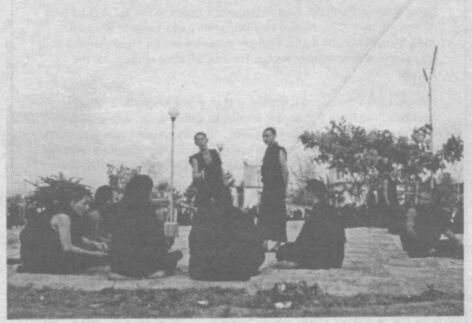
Monks in the courtyard debating the fine points of philosophy.
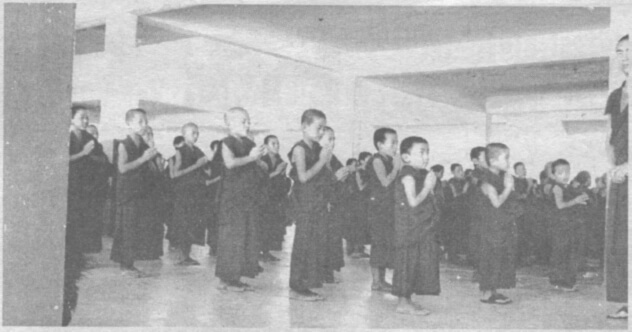
Young monks at the Sera Jey School, established in 1984. Six hundred students study traditional religious and philosophical subjects, as well as Western subjects such as science and math. In 1998, the Central Board of Secondary Education for India granted an affiliation status to the school. The is the first time in Tibetan history that a school within the framework of a monastic system has been granted affiliation status by the Central Board of Education in India.
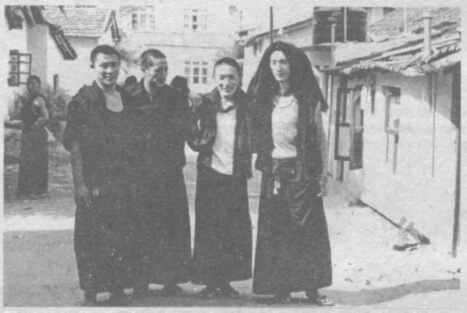
The monastery cannot keep up with the influx of new monks.
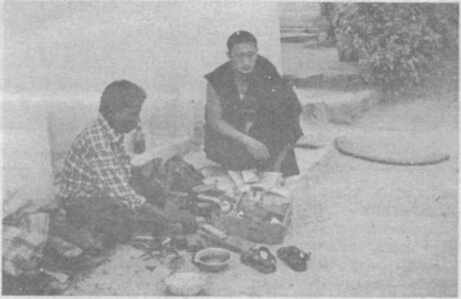
Shoe repairs.
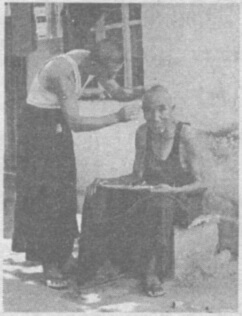
Younger monk cuts the hair of a senior monk.
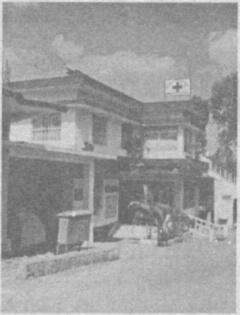
Sera Hospital.
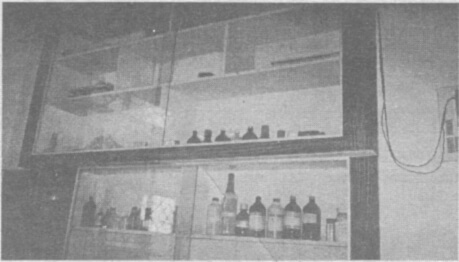
Empty shelves at the Sera Hospital. The little hospital was immaculate. There was a photo of H.H. the Dalai Lama in every room. When we were there two years ago, the hospital had no antibiotics (too expensive) and no dental care. Hepatitis Bis a serious problem and there are TB patients in the hospital.
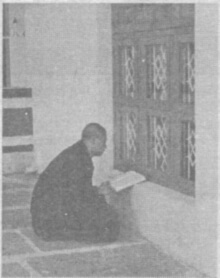
Monks are required to remain celibate and fully devote their entire life to study and spiritual practice.
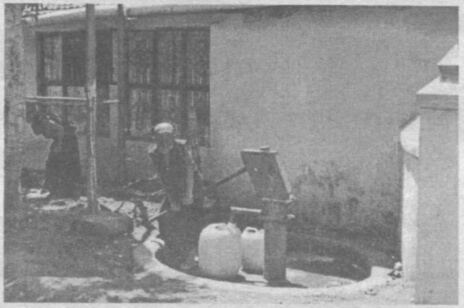
Young monk pumps water at the well.
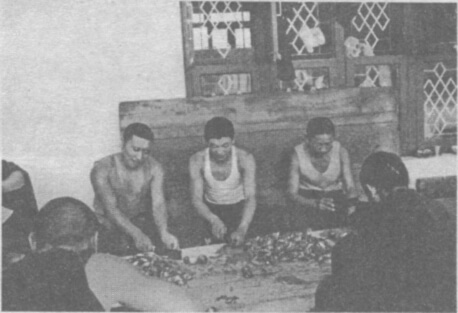
Chopping tomatoes.
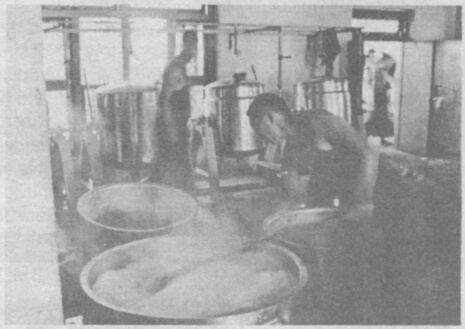
Stirring the rice with a huge wooden paddle.
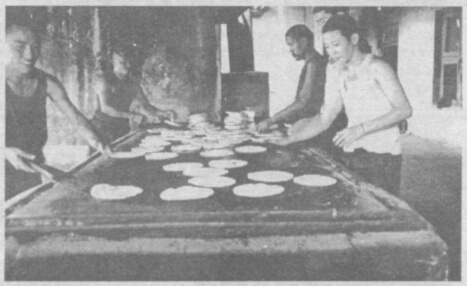
Cooking flat bread on a long grill.
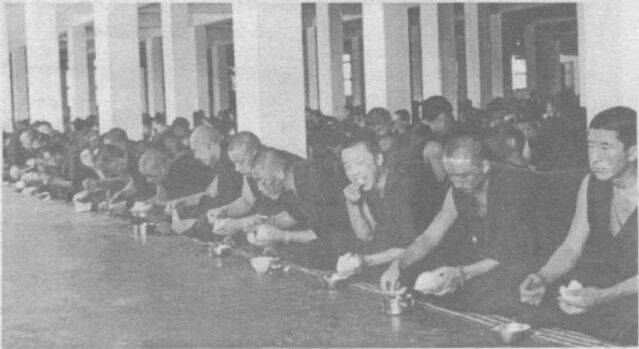
Eating lunch.

